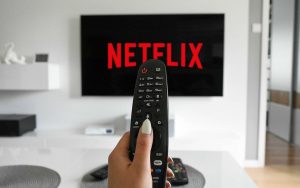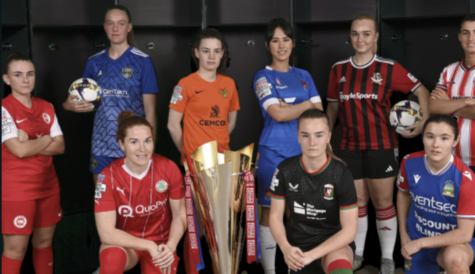A success story for Netflix
 Despite warnings of a backlash against its password-sharing crackdown and price increases across its ad-free plans, while also operating in difficult economic circumstances as well as competing in a crowded market, Netflix has held on to its title as leader of streaming with an impressive performance during the third quarter.
Despite warnings of a backlash against its password-sharing crackdown and price increases across its ad-free plans, while also operating in difficult economic circumstances as well as competing in a crowded market, Netflix has held on to its title as leader of streaming with an impressive performance during the third quarter.
This week the streaming giant revealed, off the back of its password-sharing crackdown strategy, that it had attracted 8.8 million new subscribers in the third quarter. The significant gains were well ahead of expectations from the market of six million new additions. The figure also represents an increase of 6.4 million from the same period last year, in which Netflix signed up only 2.4 million new subs. However, though Netflix’s crackdown on password-sharing has brought a huge supply of new subs, the pace of growth will inevitably die down once password-sharing users have either signed up or opted out of subscription plans, forcing Netflix to find new ways to keep money flowing into the buisness.
Hence, while new customers sign up for the streaming service, the tactic of hiking up ad-free tier subscription costs while also phasing in its cheaper ad-tier service is a smart business move from the company. The streamer introduced price increases across its subscription plans in the US, the UK and France this week. The price of Netflix’s premium plan in the US jumps from US$19.99 to US$22.99, while the cost of a basic ad-free plan goes up from US$9.99 to US$11.99, but its ad-supported package is not affected by the price increase. Though price increases will help boost revenue, the ad-supported plan ensures that price-sensitive customers do not leave the service all together and the company does not suffer major losses, while also creating another revenue stream.
In the third quarter, Netflix recorded that its ad plan membership grew 70% quarter-to-quarter, following a quarter where it saw ad plan membership grow 100% quarter-to quarter. Overall, the streamer reported it saw 30% of new sign-ups selecting the with-ads plan in the countries where the offering is available.
During an earnings call on its 23Q3 results, Gregory K. Peters, Netflix co-CEO, president and director said: “We’re not satisfied with the scale that we’re at in any country that we’re in. We want to be bigger, and we know we can be bigger. I think there’s a variety of techniques that we can employ to set that pricing and thinking about how do we factor in what’s optimal pricing for ads and no ads. That’s part of what we’re doing and thinking about plan evolution. Part of it is…feature set. These are the things that consumers want to sign up for. Part of it, too, is actually just educating consumers. I think what we are seeing is, in some of our countries, consumers think about an ad experience that is mostly anchored in linear in their expectation around ad load and frequency rates. And to some degree, actually, some of our streaming competitors haven’t done maybe as great a job in building an ads experience, which informs that expectation as well. The part of it is just educating consumers about what the actual Netflix ads experience is so that they can think about what’s the right choice for them. Do they want a lower price with ads and what we think is a great ads experience for consumers, or do they want to pay more and skip ads?”
Netflix launched its ad measurement partnership with research media firm Nielsen this month. The project provides the streamer with linear and streaming audience data across the US, Mexico and Poland. In the US, Netflix will subscribe to Nielsen’s National TV measurement data and streaming platform ratings. In Mexico and Poland, Netflix will subscribe to cross-platform audience insights which are derived from streaming panels in each respective market. Though the ad-supported tier is still in its early days and has yet to contribute significant revenue for the company, it is clear advertising is an important strategic move for Netflix which is investing in the advertising business while also prioritising providing an enhanced viewing experience that doesn’t see subscribers leaving the platform.
Commenting on driving margin expansion, Spencer Wang, Netflix’s vice president of finance, corporate development & investor relations, said that “as we expand into big new addressable markets like advertising or gaming, those open up big new areas for us. And then we intend to grow margins, too, but we also want a lot of profit dollars as well. So, we’re not narrowly optimising just for a percentage margin.”
Gaming and live sport
Gaming has also been a significant part of Netflix’s expansion plans and diversifying its revenue streams, with the roll out its beta streaming games trial to a small selection of members in Canada and the UK in August.
The limited beta test launched on select TVs in Canada and the UK today, with another rollout on PCs and Macs via Netflix’s website. As the trial got underway, Netflix said it will assess its game streaming technology and controller, andwill address any raised concerns to improve the user experience. The streaming service previously launched its gaming service on mobile devices in 2021, including games based on its IP such as Exploding Kittens, League of Legends, Too Hot To Handle and Stranger Things. It has since acquired a number of gaming studios including Spry Fox, Boss Fight Entertainment, Night School Studio and Next Games. The TV gaming launch comes as part of Netflix’s strategy to grow its gaming arm. In 2022 games were downloaded a total of 23.3 million times with an average of 1.7 million daily users, according to app analytics company Apptopi. This equated to less than 1% of Netflix’s then total of 221 million subscribers.
Peters said: “Games is a huge entertainment opportunity. So we’re talking about $140 billion worth of consumer spend on games outside of China and outside of Russia. And from a strategic perspective, we believe that we can build games into a strong content category, leveraging our current core film and series by connecting members, especially members that are fans of specific Ips, with games that they will love.”
The launch of The Netflix Cup, a celebrity golfing event featuring athletes from original sports-doc titles Formula 1: Drive to Survive and Full Swing also suggests live sports is part of the streamer’s plans – though with a major caveat. Netflix’s debut in live sports, unlike similar steps from US streamers such as Amazon’s multi-year deal for the NFL’s Thursday Night Football and Peacock’s Major League Baseball coverage, has not involved a major investment in premium rights.
Speaking on the launch Theodore A. Sarandos co-CEO, president and director, said: “We are in the sports business, but we’re in the part of the sports business that we bring the most value to, which is the drama of sport. So look at the success we’ve had with Drive to Survive. Look at the success we’ve had with Tour de France, Quarterback, Full Swing, Untold, most recently with Beckham. David Beckman is one of the biggest stars in the world and his documentary on Netflix brought him almost 0.5 million new social media followers in a week. So we are having a big impact on sports through the thing that we’re most great at, which is the drama of sport.”
However, he added, “I think about it as a great way of extending those great drama of sport brands that we’ve created. But no core change in our live sport strategy or licensing and live sports. We are investing heavily in increasing our live capabilities so that as the demand grows for that. We find different ways, the liveness can be part of the creative storytelling, and we want to be able to do that at a big scale.”



